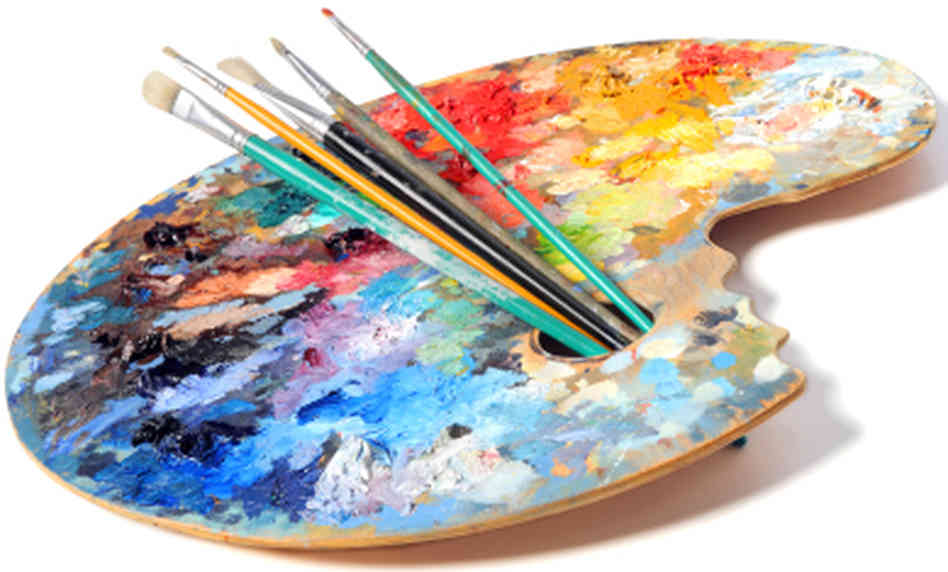Looking Into the Diverse World of Artistic Expression: From Surrealism to Abstract Realism
In the world of artistic expression, from the dreamlike landscapes of surrealism to the complex play of light and form in abstract realistic look, musicians have actually continuously pressed the limits of imagination and imagination. Each motion holds an unique lens where the world is seen and interpreted, providing a peek right into the depths of human feeling, understanding, and believed. As we discover the multifaceted world of art, we exist with a tapestry of designs, techniques, and viewpoints that challenge our understanding and prompt consideration. The journey with these diverse types of imaginative expression promises to untangle a rich tapestry of visual storytelling and intellectual query that mesmerizes the mind and stirs the heart.
Surrealism: Unleashing the Subconscious
Surrealism, an avant-garde creative motion of the 20th century, explored the depths of the subconscious, introducing a globe of dream-like imagery and unusual associations. Headed by musicians like Salvador Dali, René Magritte, and Joan Miró, Surrealism looked for to challenge the conventional methods of seeing and comprehending art. Via strategies such as automatism and dream analysis, Surrealist artists intended to touch right into the unconscious mind to expose surprise facts and needs.
One of the crucial elements of Surrealism was the focus on the illogical and the exceptional. By integrating unanticipated aspects in their jobs, Surrealist musicians aimed to produce a feeling of disorientation and shock in the visitor. This interruption of logic and factor was implied to prompt a deeper expedition of the subconscious and the mysteries of the human mind.
Abstract Realism: Redefining Assumption
Challenging standard artistic borders, Abstract Realistic look redefines perception via the fusion of recognizable aspects with abstract kinds. This cutting-edge strategy to art integrates the representational accuracy of realism with the creative flexibility of abstraction, using audiences a special visual experience that prompts them to examine their assumption of truth.
In Abstract Realism, musicians make every effort to record the essence of their subjects while likewise infusing their deal with a sense of deepness and complexity through abstract aspects. By blending the knowledgeable about the unknown, these artists welcome audiences to involve with their pieces on numerous levels, motivating them to discover the subtleties of shade, form, and appearance.

Cubism: Fragmentizing Truth
Utilizing geometric kinds and fragmented viewpoints, Cubism revolutionized the creative depiction of truth in the early 20th century. This technique not only deconstructed reality but likewise stressed the flatness of the canvas, leading the method for future abstract art motions.

Cubism can be categorized right into two main phases: Analytical Cubism, defined by single shade systems and elaborate, fragmented forms; and Synthetic Cubism, which incorporated collection elements and brighter shades into the compositions. Via these distinctive stages, Cubism affected click here for more info not only paint yet also sculpture, architecture, and design. trump art. Its effect resounded across the art world, motivating musicians to explore new methods of representing the world and translating around them
Expressionism: Emotions on Canvas
Discovering the depths of human emotions through meaningful and vivid brushstrokes, Expressionism emerged as a profound creative activity in the very early 20th century. Unlike previous art movements that concentrated on illustrating the outside world, Expressionism explored the interior realm of the artist's psyche, intending to stimulate raw feelings and provoke visceral actions from customers.
Expressionist artists, such as Edvard Munch, Egon Schiele, and Emil Nolde, declined conventional notions of appeal and realistic look in support of misshaping form and color to communicate subjective sensations. The use of overstated brushwork, strong colors, and distorted numbers aided develop a sense of unease, alienation, or enthusiasm in their works.
One of the most renowned examples of Expressionism is Munch's "The Scream," which records the intense anxiousness and misery of modern-day life with its swirling, altered figure versus a blood-red skies. Through their psychologically charged works, Expressionist musicians looked for to challenge traditional creative norms and provide a home window right into the stormy depths of the human heart.
Contemporary Art: Progressing Viewpoints

One of the defining qualities of modern art is its continuous evolution and capacity to adapt to altering social landscapes. Artists are significantly including technology into their method, blurring the lines in between the physical and digital realms. This blend of mediums enables for ingenious ways of storytelling and engaging with target markets in a much more interactive way.
Furthermore, contemporary art commonly functions as a platform for social commentary, resolving pressing problems such as identity, politics, and the setting. Musicians are utilizing their work to prompt and trigger vital conversations idea, clarifying the intricacies of the world we live in. As perspectives remain to progress, contemporary art stays a vibrant and influential force in forming our cultural landscape.
Final Thought
To conclude, the world of artistic expression includes a variety of styles and activities, each with its very own unique method to communicating definition and feeling. From click here for more info surrealism's exploration of the subconscious to abstract realistic look's redefining of assumption, and from cubism's fragmentation of fact to expressionism's portrayal of emotions, art remains to evolve and test point of views - trump art. Contemporary art reflects the ever-changing world we reside in, supplying new means to translate and understand the intricacies of our fact
As we check out the diverse world of art, we are offered with a tapestry of styles, methods, and philosophies that challenge Read More Here our understanding and provoke consideration. Its influence resounded across the art globe, inspiring musicians to explore new means of representing the globe and analyzing around them.
